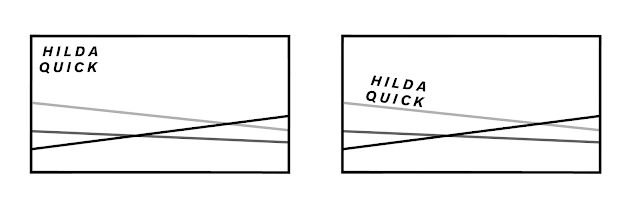Looking at the current idea of using translucent stock and creating this sense of depth and layers, much like within her photographs, I had a few personal worries myself on how this would actually work. So I sought feedback to see what others thought.
- Possibly use spray mount to layer the stock together - would hopefully create a clear hold without the visible glue marks that other glues might have.
- The business card itself could possibly be something that is intrinsically useful, something that a photographer keeps on them at all times.
- With this idea of translucent stock, maybe the business card could be use as a level to help visualise the lines before taking a photo. Almost like the business card is a level for ensuring a level photograph.
Speaking with Alec I also received a lot of useful feedback.
- Having three cards together, essentially a triplex business card, could be tricky by hand but also bulky. Maybe having three separate business cards that come together in some way would work better.
- As a result have a look at card holders, possibly think about creating your own way of holding these together.
- Create a language from her branding. This simple line concept can be transferred into every platform and piece of collateral: email footers, letter head, invoices, website, social media, postcards etc. Not just necessarily within the business cards. So that when all of her branding is seen together, it would work universally.
- Although the translucent stock idea could and would work, the reproducibility of this when out of my own hands is going to be much harder on Hilda's part. Plus also it would require finding a really nicely finished translucent stock, which is hard to come by.
So maybe revert back to using opaque stock and utilise printing techniques such as embossing to keep consistent this very simple, minimal concept for her branding. Keep with the idea of handing out three at a time within promotional packs and such as it's still a means of helping spread her brand.
Assessing the Costs
From Alec:
Here are a few contacts I used when creating my business cards:
Photocast Products LTD Liverpool - From these I got the cheap plates to emboss my business cards with. Around £24 for three metal plates.
Chrisp Printers - Around £120 for 200 business cards using the plates and stock from the company. Recommend bringing your own stock to ensure quality and finish you're after.



















































